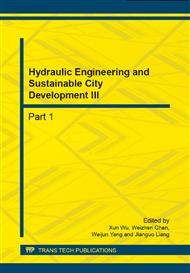p.1040
p.1046
p.1053
p.1058
p.1062
p.1066
p.1070
p.1074
p.1078
Analysis of Sustainable Development of Changsha Based on Ecological Footprint Method
Abstract:
Ecological footprint method was used to estimate the resident’s per capita resource consumption ecological footprint and per capita ecological carrying capacity of Changsha based the statistical data from 1996 to 2009. And the Changsha sustainable development issue was discussed. The results shown that during 1996 to 2009, Changsha per capita ecological footprint of biological resources consumption has a fluctuated upward trend. Ecological footprint per capita consumption of biological resources was dominated. There is a deficit of per capita ecological carrying capacity in Changsha; People activities impact on the regional ecosystem has exceeded the ecological carrying capacity, and it resulting in a greater pressure on the ecosystem. From the perspective of resources ecological carrying capacity, Changsha’s development model is not sustainable in 1996 to 2009. It should be transfer the mode of economic development, improve resource utilization efficiency, and promote the sustainable development of regional resources.
Info:
Periodical:
Pages:
1062-1065
Citation:
Online since:
September 2014
Authors:
Price:
Сopyright:
© 2014 Trans Tech Publications Ltd. All Rights Reserved
Share:
Citation:


